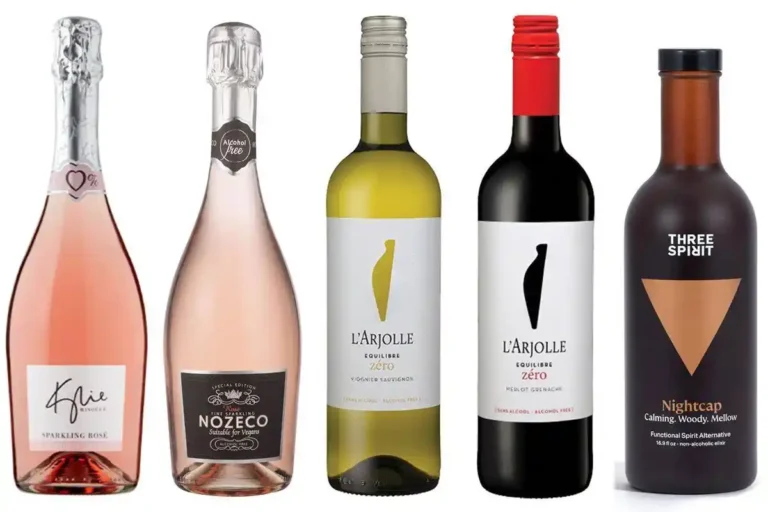A Comprehensive Guide to Dry Red Wine: Taste, Types, and Pairing Tips
Dry red wine has been a beloved choice among wine enthusiasts for centuries. Its rich flavor profiles and versatility make it a staple at gatherings, dinners, and casual sips. Whether you’re a seasoned wine connoisseur or a newcomer to the world of wine, understanding the nuances of dry red wine can elevate your wine experience.
In this guide, we’ll explore what dry red wine is, its characteristics, the different types, health benefits, and tips for pairing it with food. By the end of this article, you’ll be well-equipped to choose the perfect dry red wine for any occasion.
What Is Dry Red Wine?
At its core, dry red wine is wine that has little to no residual sugar after fermentation. During the fermentation process, yeast converts the sugars in the grape juice into alcohol. In dry wines, most of this sugar is consumed by the yeast, resulting in a wine that tastes less sweet compared to its counterparts like sweet red wines or dessert wines.
The lack of sugar in dry red wine enhances the natural flavors and complexity of the grapes, allowing the inherent tannins, acidity, and fruit characteristics to shine through. This gives dry red wines their distinctive, sometimes bold and sometimes subtle, profiles that can be savory, earthy, or even spicy.
Key Characteristics of Dry Red Wine
When tasting dry red wine, several key characteristics contribute to the overall experience. Here are some of the most important features to understand:
1. Tannins
Tannins are natural compounds found in grape skins, seeds, and stems. They give red wine its astringency, which can leave your mouth feeling dry. The higher the tannin content, the more robust and structured the wine may feel. Tannins also act as a preservative, allowing dry red wines to age well.
2. Acidity
Acidity in dry red wine provides a refreshing balance to the wine’s body and tannins. Acidity helps lift the flavors, making the wine more vibrant and crisp. Wines with higher acidity tend to pair well with a variety of foods and are excellent for aging.
3. Fruitiness
While dry red wines are not sweet, they can have a wide range of fruity notes, from dark berries like blackberries and cherries to more subtle red fruit flavors like raspberries. The fruitiness adds to the complexity and appeal of the wine.
4. Body
The body of a dry red wine refers to its weight and mouthfeel. Wines can range from light-bodied (similar to water or tea) to full-bodied (similar to cream or milk). Full-bodied wines tend to have more tannins and a stronger flavor profile, while light-bodied wines are more delicate and refreshing.
5. Alcohol Content
Dry red wines generally have an alcohol content ranging from 12% to 15%. The higher the alcohol content, the stronger the flavor and the more intense the experience. Alcohol can also contribute to the “heat” or warmth of the wine, especially in full-bodied reds.
Popular Types of Dry Red Wine
There is a wide array of dry red wines, each offering a distinct taste profile. Some of the most popular varieties include:
1. Cabernet Sauvignon
Cabernet Sauvignon is perhaps the most famous dry red wine in the world. Known for its full body and high tannin content, this wine features rich flavors of black currant, plum, and sometimes even tobacco or leather. It’s a wine that pairs beautifully with hearty meats, like steak or lamb.
2. Merlot
Merlot is a smoother, softer red wine compared to Cabernet Sauvignon. It has medium tannins and a fruit-forward flavor, often with notes of black cherry, plum, and chocolate. This makes Merlot a great choice for those who want a more approachable dry red wine. It pairs well with a variety of foods, including roast chicken and pasta dishes.
3. Pinot Noir
Pinot Noir is a lighter-bodied dry red wine with bright acidity and a more delicate profile. This wine often features flavors of red fruit, like strawberry, raspberry, and cherry, along with earthy or floral notes. Pinot Noir is a versatile wine that pairs excellently with grilled salmon, roasted vegetables, and even turkey.
4. Syrah/Shiraz
Syrah (also known as Shiraz in Australia) is a bold, full-bodied wine known for its spicy, peppery notes. It has dark fruit flavors like blackberry and blueberry, along with hints of smoke, tobacco, and sometimes even chocolate. Syrah is perfect for pairing with grilled meats, barbecue, and dishes with bold spices.
5. Zinfandel
Zinfandel is a dry red wine with a bold, jammy fruit profile. It features flavors of blackberries, plums, and sometimes even a touch of pepper or spice. Zinfandel wines can range from medium to full-bodied, and they pair wonderfully with pizza, barbecued meats, and spicy foods.
6. Malbec
Malbec is a rich, dark red wine that originates from Argentina. It has intense fruit flavors, including blackberries, plums, and dark cherries, and is known for its velvety texture. Malbec is often used to complement grilled meats and charred dishes due to its full body and smoky finish.
7. Sangiovese
Sangiovese is the backbone of Italy’s Chianti wines. This medium-bodied wine is characterized by its bright acidity and flavors of cherry, red plum, and herbs. Sangiovese wines are excellent companions to tomato-based dishes like pasta with marinara sauce or pizza.
The Health Benefits of Dry Red Wine
While moderation is key, dry red wine has several health benefits, many of which stem from its antioxidant content. Here are a few of the potential benefits of drinking dry red wine in moderation:
1. Rich in Antioxidants
Dry red wines, especially those made from thick-skinned grapes, are rich in antioxidants like resveratrol. Resveratrol has been linked to improved heart health, reducing inflammation, and potentially preventing chronic diseases.
2. Supports Heart Health
Studies suggest that drinking moderate amounts of dry red wine can benefit heart health by increasing “good” HDL cholesterol and reducing the risk of heart disease. The polyphenols in red wine help protect blood vessels and improve circulation.
3. Boosts Longevity
The resveratrol found in dry red wine has also been linked to improved longevity. This compound may help protect against age-related diseases and promote cell repair, contributing to a longer, healthier life.
4. Enhances Brain Health
Moderate consumption of dry red wine has been shown to have neuroprotective effects. Resveratrol may help improve brain function and reduce the risk of cognitive decline, especially in older adults.
Pairing Dry Red Wine with Food
One of the greatest joys of drinking dry red wine is its ability to elevate the flavors of food. Here are some helpful pairing tips for enjoying dry red wine with meals:
1. Red Meat
Full-bodied dry red wines like Cabernet Sauvignon and Syrah pair wonderfully with red meats like steak, lamb, and venison. The tannins in the wine help cut through the richness of the meat, creating a balanced and flavorful experience.
2. Cheese
Hard cheeses like aged cheddar, gouda, and parmesan work well with dry red wines. The bold flavors of wines like Zinfandel or Malbec complement the saltiness and complexity of the cheese.
3. Grilled Vegetables
Pinot Noir, with its delicate fruit notes, is a perfect match for grilled vegetables, particularly mushrooms, bell peppers, and eggplant. The wine’s acidity enhances the smoky flavors of the vegetables.
4. Pasta
If you’re enjoying pasta with a tomato-based sauce, a Sangiovese-based wine like Chianti will be an excellent choice. The wine’s acidity matches the tangy tomato sauce and complements the richness of the pasta.
5. Chocolate
For dessert, a glass of dry red wine can be paired with dark chocolate. Wines like Merlot or Cabernet Sauvignon work particularly well with rich, bittersweet chocolate, creating a luxurious pairing experience.
Conclusion
Dry red wine is more than just a drink; it’s an experience. With its diverse flavors, wide range of styles, and ability to pair with almost any dish, dry red wine offers something for everyone. Whether you’re savoring a glass of Cabernet Sauvignon after a long day or enjoying a bottle of Pinot Noir with dinner, you’re sure to appreciate the depth and complexity that this wine variety brings to the table.
Remember, the key to enjoying dry red wine is moderation and experimentation. With so many varieties to choose from, there’s always a new flavor profile to discover. So, the next time you’re in the wine aisle, don’t hesitate to explore the world of dry red wine – your taste buds will thank you!






